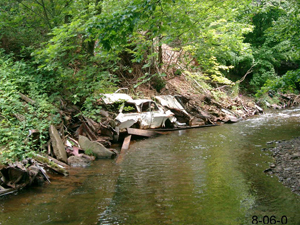This section provides more detailed information about the importance of riparian buffers, instructions about streamside planting, a list of Catskill native trees and shrubs and where to get them and other guidance about proper management of the streamside area.
Click here for a diagram about buffer functions
Click here for more information about how to plant a buffer
Click here for the Catskill Streams Buffer Initiative Page – This program assists landownwers with technical and financial assistance for their riparian buffers.
Click here for a map of riparian buffer restoration projects as of October 31, 2018.


